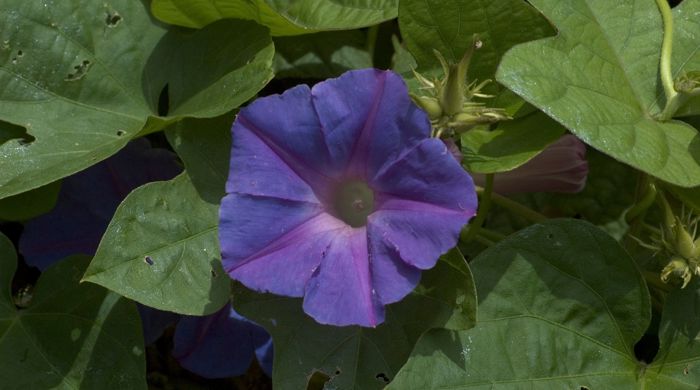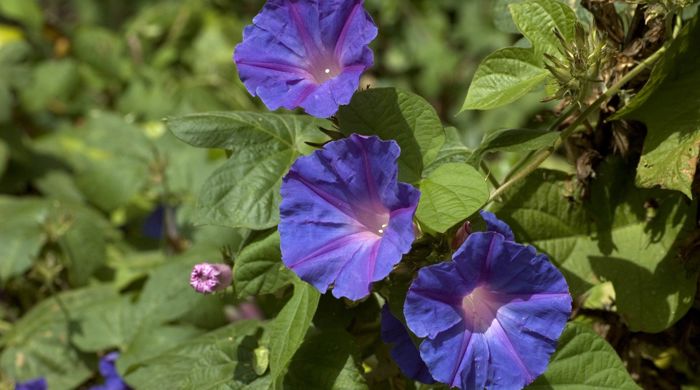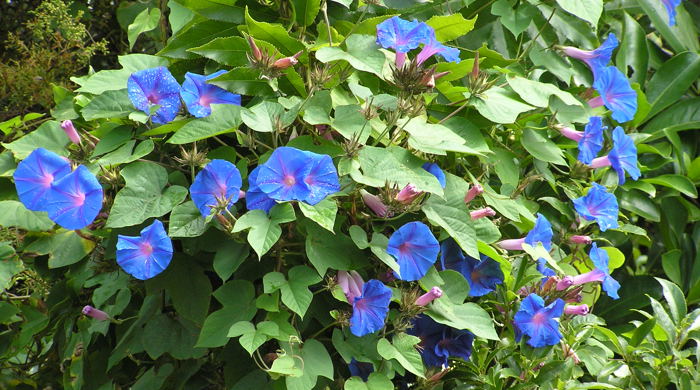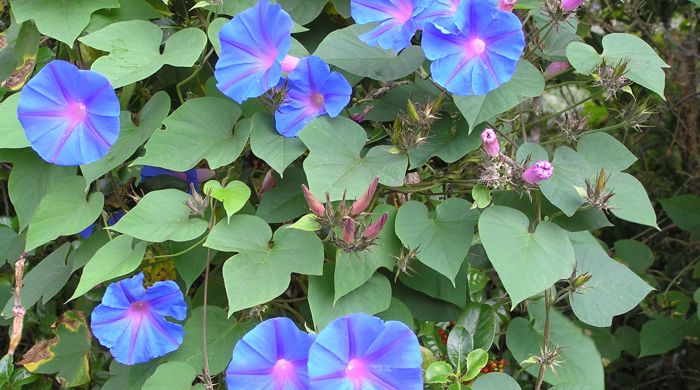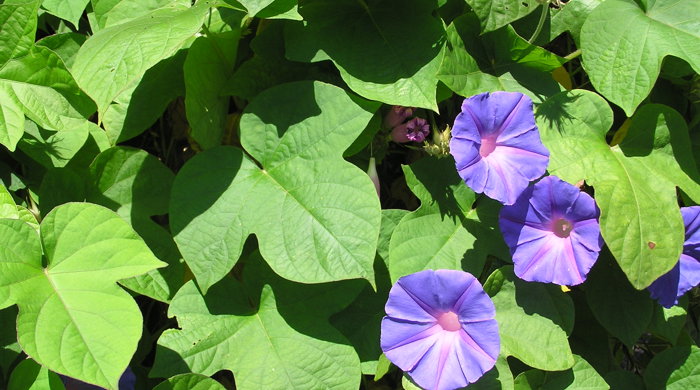Ipomoea indica
Blue morning glory
Family: Convolvulaceae
Origin: Pantropical
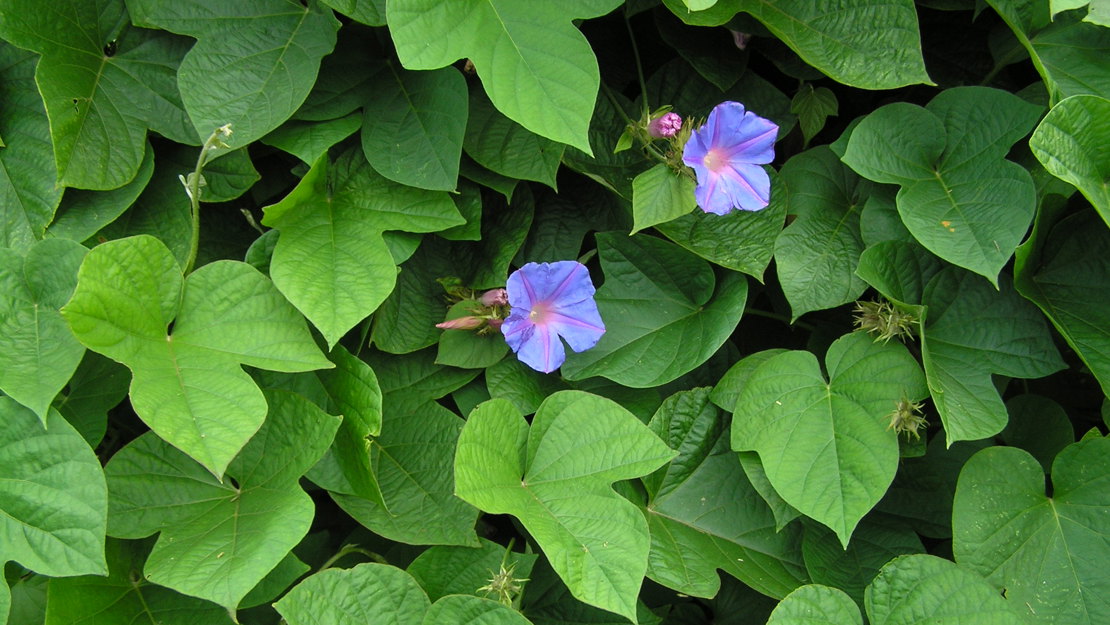
Regional Pest Management Plan (RPMP) status
- Parkland with Significant Ecological Areas — Site-led (on-park and buffer)
- Whole region — Sustained control
- Waitākere Ranges Heritage Area priority status
- National Pest Plant Accord Species
General description
High-climbing, fibrous-rooted, hairy perennial. Stems are twining, running, long, often purplish, and densely hairy. Leaves are alternate, triple-lobed, < 18 x 16 cm, silky haired and pointed. Flowers are tubular, blue/purple, and are borne in clusters January – December.
What you need to know
To help protect our environment:
- You must not breed, distribute, release or sell blue morning glory. As blue morning glory is a National Pest Plant Accord species, these restrictions apply within the Auckland region and across the whole of New Zealand.
- You must not plant blue morning glory within the Auckland region, unless you are transferring an existing plant on your land to another location within the boundaries of the same property.
- You must destroy any blue morning glory on land that you occupy if it has been planted in breach of the above rules and you are directed to do so by an authorised person.
Auckland Council will manage blue morning glory in buffer areas of parks, where blue morning glory is being managed, to an extent that protects the values of that parkland. If you wish to help protect your local parkland, you are encouraged to control or remove any blue morning glory on your land and plant a better alternative instead. View a map of park buffers.
To find out more about how we’re protecting Auckland’s parkland from pest plants, visit our pest plant buffer pages.
Habitats
Forest and scrub margins, gardens, plantations.
Dispersal
Vegetative spread from stem and root fragments. Human-mediated dispersal through dumping of garden waste.
Impact on environment
Smothers and suppresses native vegetation on the ground or in the canopy.
Control
Site Management
Cut and pull vines away from desirable trees and native plants before foliar spraying. Follow up treated areas 3 times per year. Encourage natural regeneration of native plants or replant treated areas where possible after 2-3 treatments.
Recommended approaches
Physical control
Method: Cut vines and leave upper stems to die in trees or dig out.
Plant parts requiring disposal: All parts (except vines if left to die in trees).
Disposal options: Compost in a composting weed bag or remove to greenwaste or landfill.
Biocontrol
Biocontrol is currently not available for this species.
Community agrichemical control recommendations
No qualifications: For small infestations: Cut stump and paste freshly cut base of stems with metsulfuron gel.
Basic growsafe certified: For small infestations: cut stump and spray freshly cut base of stems with 1g metsulfuron-methyl per 1L of water or cut vines at waist height and foliar spray vines on the ground with 0.5g metsulfuron-methyl per 1L of water.
Certified handler/experienced agrichemical user: For medium to large infestations: cut vines at waist height and foliar spray vines on the ground with 5g metsulfuron-methyl per 10L of water and 20ml penetrant.
Caution: When using any herbicide or pesticide please read the label thoroughly to ensure that all instructions and safety requirements are followed.
